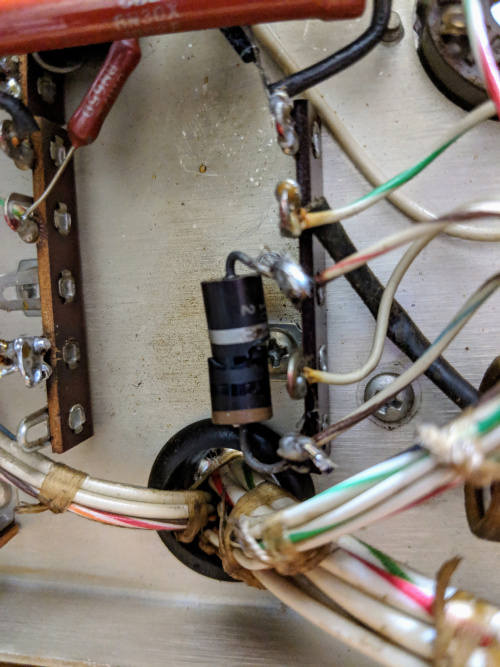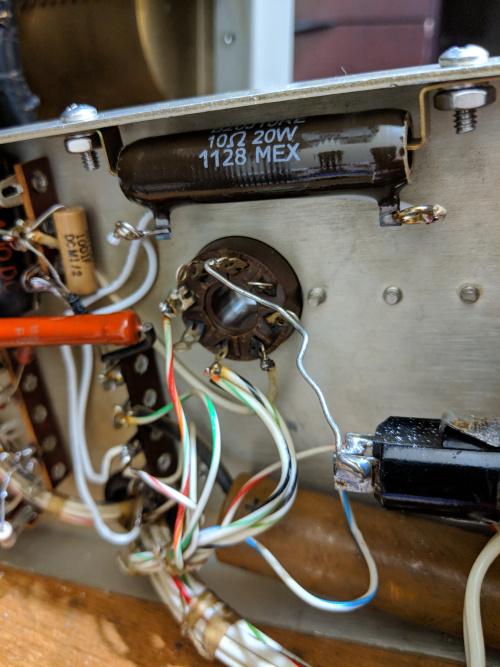Dealing with the Overheated and Cracked R232: Difference between revisions
(Created page with "<p> <span> 500px|thumb|left R232 broken into two pieces. Somewhere along the line, a previous repair has replaced the Collins 10-ohm 14W resi...") |
No edit summary |
||
| (One intermediate revision by the same user not shown) | |||
| Line 7: | Line 7: | ||
The purpose of this resistor is to limit screen-supply (inrush) current, in the same manner as R222 and R223 do for the HV plate-supply. |
The purpose of this resistor is to limit screen-supply (inrush) current, in the same manner as R222 and R223 do for the HV plate-supply. |
||
</span> |
|||
</p> |
|||
<br clear=all> |
|||
<p> |
<p> |
||
| Line 13: | Line 17: | ||
Awesome new 10-ohm 20W R232! This Ohmite replacement brings higher-dissipation, and solid mounting. |
Awesome new 10-ohm 20W R232! This Ohmite replacement brings higher-dissipation, and solid mounting. |
||
I wanted to mount R232 very solidly, so I opted for a tubular-ceramic resistor with mount-clips. I also moved to higher-dissipation capacity (20W) than Collins specified (14W), and I chose a new placement with improved air circulation and reduced heat-soak of nearby components - along the edge of the Relay Shelf. |
I wanted to mount R232 very solidly, so I opted for a tubular-ceramic resistor with mount-clips. I also moved to higher-dissipation capacity (20W) than Collins specified (14W), and I chose a new placement with improved air circulation and reduced heat-soak of nearby components - along the edge of the Relay Shelf. |
||
Latest revision as of 20:29, 11 November 2020
R232 broken into two pieces. Somewhere along the line, a previous repair has replaced the Collins 10-ohm 14W resistor with this small (2W???) resistor; it's overheated then cracked as a result.
The purpose of this resistor is to limit screen-supply (inrush) current, in the same manner as R222 and R223 do for the HV plate-supply.
Awesome new 10-ohm 20W R232! This Ohmite replacement brings higher-dissipation, and solid mounting.
I wanted to mount R232 very solidly, so I opted for a tubular-ceramic resistor with mount-clips. I also moved to higher-dissipation capacity (20W) than Collins specified (14W), and I chose a new placement with improved air circulation and reduced heat-soak of nearby components - along the edge of the Relay Shelf.
Mounting hardware is all 18-8 stainless: #6-32 x 3/8 Phillips pan-head machine-screws, internal-tooth lockwashers and hex-nuts. On the outer (visible) edge of the Relay Shelf, I aligned the Phillips-head crosses :-)
In this location, and for other repairs, my wire of choice is either 22ga or 18ga (19 or 34 strands of 0.007 for maximum flexibility), with 3kV silicone insulation.

